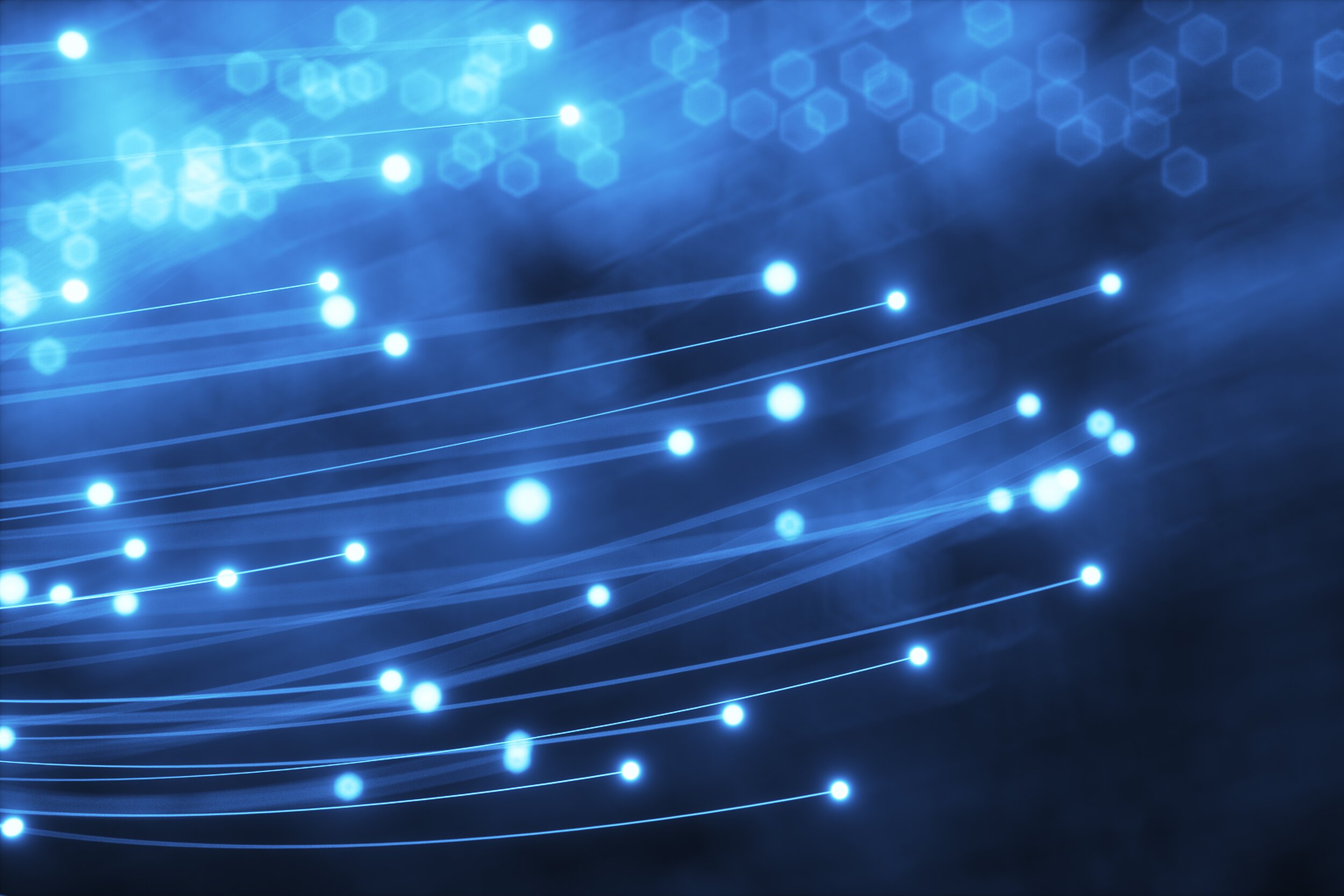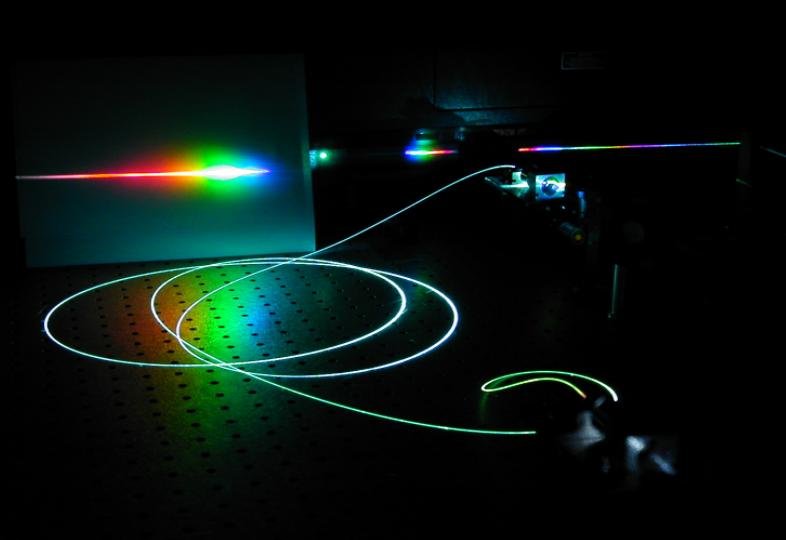Physics 71200 Photonics I (Fall semesters)
This undergraduate/graduate-level course aims to provide a rigorous foundation in the fundamentals of light-matter interactions and optical physics. It covers a wide range of relevant topics, including electrodynamics, modern optics, integrated photonics, and quantum electronics. Tentative topics include Plane waves, Kramers-Kronig relations and material dispersion, boundaries and interfaces, transfer matrix methods, thin-film devices, waveguides and resonators, periodic structures, photonic crystals, two-level systems/oscillators, free-electron metals, plasmonics, semiconductors, excitons, lasers and amplifiers, and photodetectors.
Learning outcomes: (1) Establish a deep understanding of how photonic technologies are rooted in the fundamental concepts covered in this course. (2) Gain hands-on experience with essential optical laboratory techniques and technologies, such as lasers and detectors. (3) Connect students with cutting-edge research topics in optical physics, photonics, materials science, and condensed matter laboratories.
Lecture 1: Course Overview
Lecture 2: Review of Maxwell equations Lecture note
Lecture 3: Plane waves Lecture note
Lecture 4: Reflection, refraction, and evanescent wave Lecture note
Lecture 5: Chromatic dispersion I Lecture note
Lecture 6: Chromatic dispersion II Lecture note
Lecture 7: Thin-film Optical Devices I Lecture note
Lecture 8: Thin-film Optical Devices II Lecture note
Lecture 9: Optical Waveguide I Lecture note
Lecture 10: Optical Waveguide II Lecture note
Lecture 11: Waveguide devices Lecture note
Lecture 12: Periodic media I Lecture note
Lecture 13: Periodic media II Lecture note
Lecture 14: Metal Optics Lecture note
Lecture 15: Surface plasmon polaritons Lecture note
Lecture 16: Surface phonon polaritons Lecture note
Lecture 17: Interaction of radiation and atomic system Lecture note
Lecture 18: Stimulated emission and amplification Lecture note
Lecture 19: Laser oscillation I Lecture note
Lecture 20: Laser oscillation II Lecture note
Lecture 21: Semiconductor lasers Lecture note
Lecture 22: Photodetectors Lecture note
Physics 85200 Lasers and Nonlinear Photonics (Spring semesters)
This graduate-level course delves into the phenomena and principles of nonlinear optics and lasers, exploring these interrelated topics at both physical and engineering levels. We begin by examining the quantum mechanics underlying nonlinear optical responses and laser dynamics. Next, we address interesting and important phenomena commonly encountered in the field, including intensity-dependent refractive indices, soliton formation (quadratic and Kerr), Brillouin and Raman scattering, self-focusing, Q-switching, and mode-locking. Intertwined with these phenomena, we also discuss various high-impact applications such as parametric amplifiers, quantum squeezing, entangled photon pair generation, supercontinuum generation, ultrashort-pulse generation, and frequency combs. In addition to homework, students will be engaging in a well-designed final project concerning cutting-edge research problems by leveraging knowledge acquired from lectures and advanced computational tools.
Learning outcomes: (1) Students will gain physical insight into cutting-edge research in nonlinear optics, lasers, and quantum photonics; (2) Students will become proficient with advanced computational tools for simulating nonlinear and laser dynamics.
Lecture 1: Course Overview
Lecture 2: Overview of Nonlinear Optical Processes Lecture note
Lecture 3: Nonlinear susceptibilities Lecture note
Lecture 4: Nonlinear wave equation Lecture note
Lecture 5: Phase matching and QPM Lecture note
Lecture 6: SFG, SHG Lecture note
Lecture 7: DFG, Optical parametric amplification Lecture note
Lecture 8: Optical parametric oscillator Lecture note
Lecture 9: Kerr effect Lecture note
Lecture 10: Pulse propagation, dispersion Lecture note
Lecture 11: Chirp, Self-phase modulation Lecture note
Lecture 12: Modulation instability, Soliton Lecture note
Lecture 13: Raman and Brillouin Scattering Lecture note
Lecture 14: Stimulated Raman Scattering (SRS) Lecture note
Lecture 15: Stimulated Brillouin Scattering (SBS) Lecture note
Lecture 16: Interaction of Radiation and atomic system Lecture note
Lecture 17: Stimulated emission and amplification Lecture note
Lecture 18: Laser oscillation I Lecture note
Lecture 19: Laser oscillation II Lecture note
Lecture 20: Q-switching Lecture note
Lecture 21: Mode-locking Lecture note

